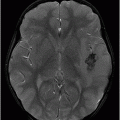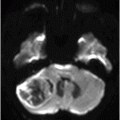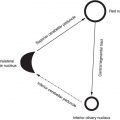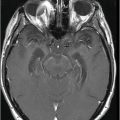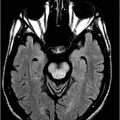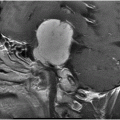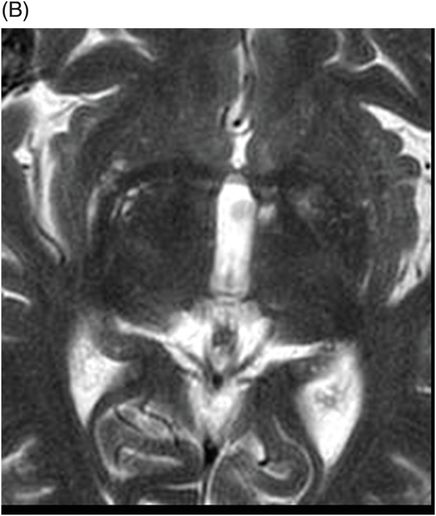
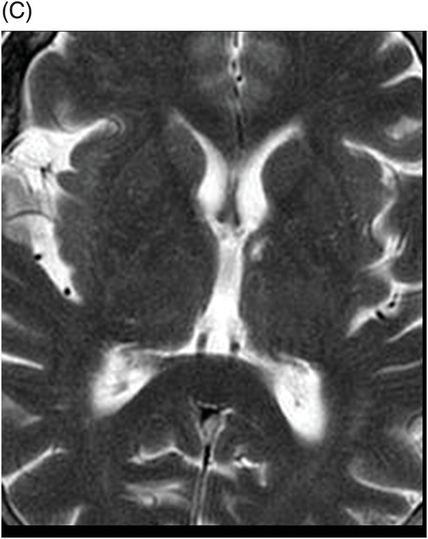
(A) Axial and (B) Coronal T2WI through the level of the mammillary bodies.
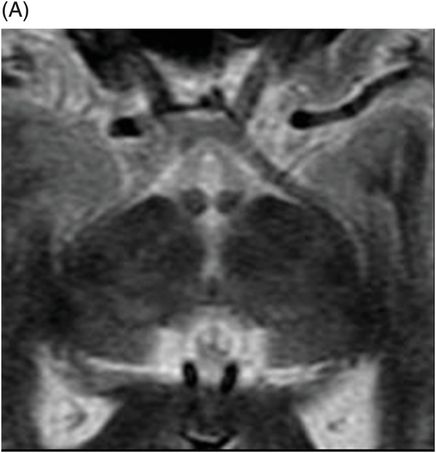
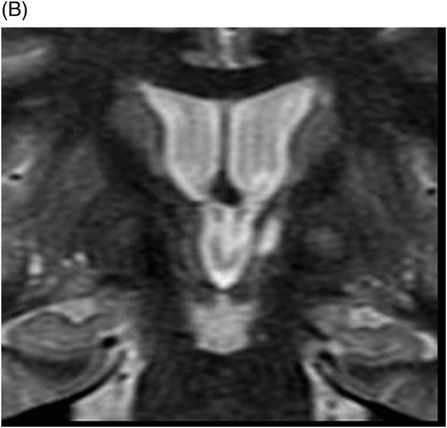
Anterior Thalamic Infarct with Transneuronal Degeneration of Mammillothalamic Tract (MTT)
Primary Diagnosis
Anterior thalamic infarct with transneuronal degeneration of mammillothalamic tract (MTT)
Differential Diagnoses
Alzheimer disease
Other causes of dementia
Imaging Findings
Fig. 123.1: (A) Axial FLAIR and (B–C) T2WI showed an old ischemic infarct involving the left anterior thalamus. Fig. 123.2: (A) Axial and (B) Coronal T2W images more clearly demonstrated left mammillothalamic tract involvement and the left mammillary body atrophy, in comparison to the normal, contralateral right-sided structures.
Discussion
Focal cystic encephalomalacia in the left anterior thalamic nucleus/mammillothalamic tract (MTT) is suggestive of chronic lacunar infarction. The small left mammillary body (MB) (Fig. 123.2) may be secondary to transneuronal degeneration of the MTT.
Clinically, the most common cause of amnesic syndrome is Alzheimer disease (AD), which causes atrophy of the mesial temporal lobe, believed to begin at the entorhinal cortex and hippocampus. However, the acute onset of symptoms in this patient rules out AD as a potential diagnosis. In addition, the absence of significant hippocampal atrophy, a common finding in AD, excludes AD as a diagnosis in this patient.
First described by the French physician Felix Vicq d’Azyr, the MTT connects the MB with the anterior thalamic nucleus. As part of the Papez circuit (circuit connecting the hypothalamus with the limbus system), disruption of the MTT could cause a memory disturbance. The presence of tumors or damage to the Papez circuit is a known indicator of amnesia and AD. However, the role of the MTT in the memory circuit is controversial. There are many reports of acute-onset Korsakoff syndromes and acute-onset amnesias developing after anterior thalamic infarction, suggesting that the key role of the anterior thalamus and the MTT points toward memory. However, the extent, significance, and prominence of the MTT’s exclusive role in memory and amnesic syndromes are contradictory. Some investigators strongly support the concept that the memory impairment following MTT infarctions could be attributed to extension of the lesions into the anterior thalamic nucleus.
Acute onset of anomia, anterograde and retrograde amnesia after a MTT infarction, without thalamic involvement, has also been described – emphasizing the importance of the MTT’s role in memory disturbance symptomatology, and excluding the role of the MB and the thalamus. Verbal memory is more commonly affected than non-verbal memory following MTT injury.
Stay updated, free articles. Join our Telegram channel

Full access? Get Clinical Tree


